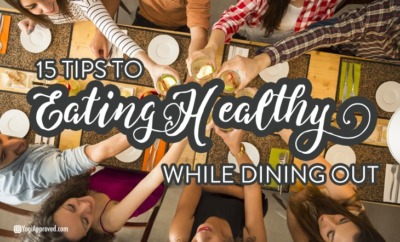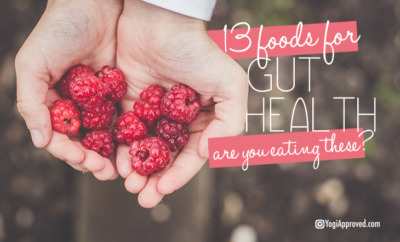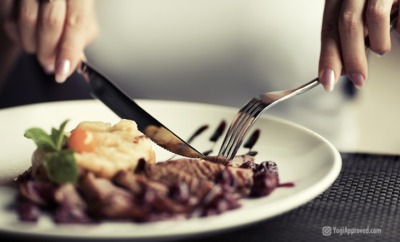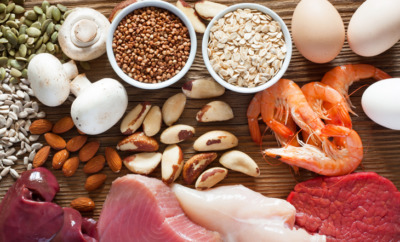The Best and Worst Diets of 2015

Ever since Lord Byron mixed apple cider vinegar with his water as a weight-loss technique in 1820, we have been trying to figure out the perfect recipe for weight management. However, as food has evolved and farming and manufacturing practices have transformed the definition of what we call food, it has become harder to identify which foods are healthy and actually encourage weight loss.
Today, the diet craze has reached a true peak. With over 100 million dieters in the world and $20 billion spent annually on weight loss supplements and dieting systems, it seems that people will try anything to lose weight. While diet is only one piece of the puzzle, it is an element that we can fully control and one that makes the largest impact on weight management.
There are good diets and there are terrible diets that should never, ever exist, including the cotton diet (you eat cotton to feel fuller), the 5 bite diet (you can eat anything that you want, but just 5 bites), the tapeworm diet (yes, you ingest a tapeworm), the cabbage soup diet (enough said) and the sleeping beauty diet (sedate yourself for days so you sleep off the pounds).
Yikes! With all these diet fads out there, it’s hard to pinpoint which diets are good, which should be avoided, and most importantly, which one best fits your specific needs and goals.
Here are the 5 best diets of 2015:
1. The Anti-Inflammatory Diet
The Anti-Inflammatory Diet focuses on the foods that inflame different parts of your body. It is not a quick-fix; rather it is a way to identify foods that support or combat your digestive system. This diet focuses on all things that may inflame your digestive system, including gluten, dairy and processed foods. While the removal of inflammation will help your body perform more efficiently, be aware that this diet only focuses on inflammation and not on nutrient intake and a healthy, balanced diet. However, it is a good first step to listening to your body and identifying foods that agree or disagree with your digestive system.
2. Paleo Diet
The premise behind the Paleo Diet is that you only eat foods that cavemen ate: fruits and veggies, meat, nuts and seeds. You do not eat any processed foods, including dairy and grains, and you do not count calories or portion sizes. Many health ailments and bodily inflammation can be a thing of the past when you implement a Paleo Diet, which is more of a lifestyle change than a diet.
The Paleo Diet is up for interpretation by the dieter. For instance, you can eat meat, but if you choose to have a fatty pork chop each day and expect to maintain a slim waistline, you will be sadly mistaken. The diet also leaves many dieters deficient in some key nutrients, namely vitamin D and calcium, which is mainly found in the foods eliminated by this diet. This is an important reminder that no matter what diet you choose, you should educate yourself first to ensure you’re not depriving yourself of key nutrients.
3. Atkins Diet
Atkins is a weight-loss program where you limit your carbs and sugar to lose weight, which steadies your sugar levels and reduces hunger cravings and fat storage. With this diet, you burn fat and lose weight by cutting carbs. When you do eat carbs, you can choose to eat nutrient-rich options, such as quinoa. This diet focuses on eating plenty of protein to keep you feeling full and energized and not sluggish or weighed down from carb-overload.
4. If it Fits Your Macros (IIFYM)
Macros are comprised of carbohydrates, proteins and fats. The If It Fits Your Macros Diet (IIFYM) is increasing in popularity as it focuses on paying attention to these key components of your diet to ensure that you are covering your major nutritional requirements. The diet has you calculate your daily caloric needs and then split those calories 40/40/20: 40% carbs, 40% protein and 20% fat.
The issue with this diet is that dieters will eat an unhealthy food “as long as it fits the macros,” thinking that the macros measurement gives them the license to eat whatever they want. There is a big difference between healthy fats and carbs and unhealthy ones. For instance, a slice or two or three of pizza can fit your macros, but anyone knows that pizza is not a food that you would gravitate toward to lose weight.
5. MyPlate
Replacing the old food pyramid, MyPlate is a government-run online resource that empowers people to make healthy food choices. It sets forth some basic ground rules for healthy eating using an illustration of the five basic food groups using a place setting. The image of a place setting allows you to imagine your meal and think about what you eat, before you eat it.
The shortcoming of MyPlate is that it is not a plan with specific rules that people can follow. It just gives you an idea of what you should be eating at different times, but it does not focus on macronutrients (carbohydrates, fat and calories). For instance, it tells you that you should be eating vegetables, but it doesn’t tell you the amount of vegetables you should be eating each day. Essentially, MyPlate is a great diet for someone beginning their journey of healthy eating by providing basic nutritional guidelines to follow.
Here are the 5 worst diets of 2015
1. Ketosis State Diet
The Ketosis State Diet is where you intentionally take low carb to the extreme, intentionally putting your body in a state just above starvation. In this state, your body releases ketones, a chemical that breaks down body fat to provide your body with fuel for its everyday functions. You will also ingest less than the daily minimum caloric intake of 1,200. You will lose weight with this diet, but at what cost?
2. The Bead Diet
This low-calorie diet consists of alternating days that you only drink whole milk with days where you only consume fruits and veggies. When you are hungry, you use breathing techniques and utilize beads placed behind your ears for acupressure to send a message to the nerve endings behind your ears, which you press to quiet pangs of hunger. It is not a diet for people who are lactose intolerant or those with lactose sensitivity.
This diet perpetually puts your body in shock due to the severely low calorie intake followed by a high-fat and high-calorie milk day, going from one extreme to another. Then, when you feel hungry from lack of calories or ingesting a balanced, stable diet, you can stimulate the nerves behind your ears by pressing on the beads. Shock and starvation are not effective bodily states for long-term, sustainable weight loss goals.
3. Intermittent Fasting Diet
Intermittent Fasting is not necessarily a diet, but it is a pattern of eating in which you eat meals closer together followed by longer periods of fasting. There are multiple approaches to fasting methods, but the underlying concept is that by scheduling your meals, you will make the most of each meal, without changing what you eat. However, the science behind fasting is that when you fast, you slow down your metabolism. A slower metabolism means that you burn less calories at rest. Burning less calories at rest means that you burn less fat. Do you want to burn less calories and fat? We think not!
4. The Master/Other Cleanse Diet
Cleanses are meant to be a kick-start to get you on the right path toward a healthy lifestyle. However, if you turn a one-time clease into a long-term routine or diet, you can have detrimental effects on your health. If you perpetually follow a protocol that is designed to purge your system, it will hurt you in the long run. For instance, with the Master Cleanse, you ingest a mixture of lemon, honey and cayenne pepper for a period of time, which depletes your body of nutrients. However, you can choose to do a one-day cleanse after a holiday or a period of not-so-healthy eating to get you back on the right path and detox your body to reset your system.
5. The Gluten-Free Diet
Gluten is crippling to those with Celiac Disease, but even those without this autoimmune disease may experience gluten sensitivity. For many of you, the removal of gluten will help remove inflammation from your body, however the Gluten-Free Diet does not emphasize other potentially inflammatory foods like dairy. It also does not encourage eating nutrient-dense foods in place of gluten-filled foods, leading dieters to eat the same foods that they would typically eat, but in a gluten-free format. Just because a food is gluten-free does not mean that it is healthy. Unhealthy is unhealthy, gluten or no gluten.
While there are many good, bad and ugly diets, none of them will have any impact if you don’t follow them. Ultimately you need to listen to your body and do what makes you feel good. Your diet needs to be something that aligns with you both physically and emotionally. If you need something in your diet like chocolate, but know that it doesn’t fit within the parameters of a diet that you are following, then guess what? You have the wrong diet! The best diet is the one that works for you and that you will stick with day in and day out. Find a system that works and stick with it!
Remember that the idea behind a diet is to make you feel better about yourself and to help you reach a body weight that makes you feel and look great. You should not stress about your diet. It should not make you angry or temperamental to the point that you take out your hunger and frustration on those around you. Your diet should make you happy, healthy and feel great. Find a diet that works for you and stick with it, and you will achieve weight loss success!


This Month's Letter
From the Editor
Monthly motivation and food for
thought from our founder.




























Comments